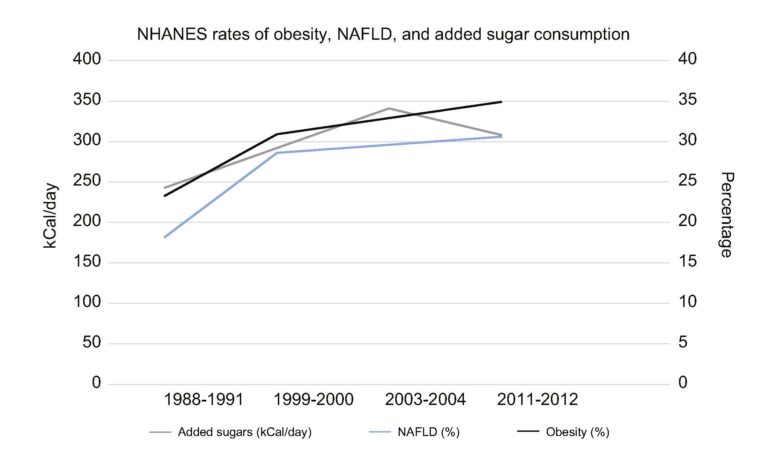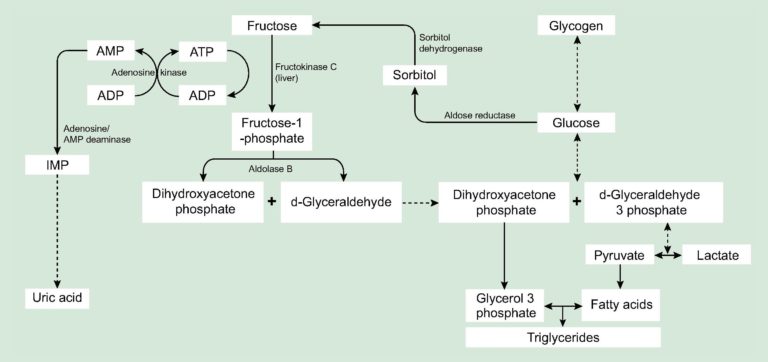This 2018 paper published in the Journal of Hepatology reviews the evidence linking fructose and sugar-sweetened-beverage (SSB) consumption to nonalcoholic fatty liver disease (NAFLD). Fructose and SSB consumption correlates with NAFLD incidence and progression: Children and adults who consume more have higher risk of NAFLD, and patients with NAFLD (and with more severe disease progression) tend to consume more sugar than their peers.

Figure 1: Association of added-sugar consumption with rates of nonalcoholic fatty liver disease (NAFLD), obesity in National Health and Nutrition Examination Survey (NHANES) data.
Fructose promotes fat accumulation in the liver through multiple mechanisms, increasing fat production (de novo lipogenesis); decreasing fatty-acid oxidation; and driving direct and downstream consequences in the liver, gut and adipose tissue that further increase fat storage and inflammation. These mechanisms demonstrate means by which fructose both increases risk for liver steatosis (excessive fat storage in liver tissue) and more severe forms of the disease resulting from fibrosis (including nonalcoholic steatohepatitis—NASH—and eventually cirrhosis).
